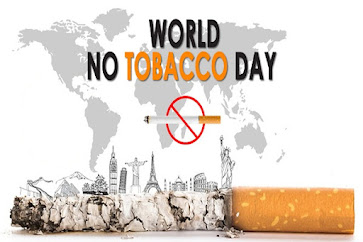Protecting Our Youth: Shielding Children from Tobacco Industry Manipulation
Protecting Our Youth: Shielding Children from Tobacco Industry Manipulation
By Dr. Rajendra Nanavare, Pulmonologist, Mumbai, Maharashtra.
May 31st is World No Tobacco Day, an international initiative spearheaded by the World Health Organization (WHO) to highlight the risks associated with tobacco use and promote impactful policies to decrease its use. This year's theme, "Shielding Children from Tobacco Industry Manipulation," emphasizes the urgent need to protect youth from the deceptive strategies of the tobacco industry.
The total number of premature deaths caused by tobacco during the twentieth century has been estimated at about 100 million and, if current trends of tobacco use persist during the twenty-first century, the death toll is projected to escalate to one billion. The World Health Organization (WHO), which provides these estimates, also predicts that India will have the quickest rate of increase in deaths attributed to tobacco in the first two decades of the twenty-first century. Many of these deaths will occur in the productive years of adult life, as a consequence of an addiction acquired in youth. The compelling need to save many of these lives from succumbing to tobacco use addiction and the urgent imperatives of avoiding the immense health, economic, social, and environmental burdens that would be imposed by tobacco on a nation that aims for rapid development.
Tobacco consumption leads to a variety of significant diseases affecting almost every organ of the body. These include multiple forms of cancer, cardiovascular diseases, and respiratory illnesses. Public health researchers have been corroborating these findings and uncovering increasingly harmful evidence about the health consequences of tobacco use for over fifty years. Historically, the tobacco industry promoted and sustained the misconception that the evidence linking smoking to poor health was debatable. In recent years, however, many tobacco companies have abandoned that stance.
Despite clear evidence that tobacco use is harmful and the availability of tools to prevent and control its use, tobacco control remains challenging. Numerous factors influence a person's decision to use tobacco or continue using it. The primary factor is the extensive industry activity, including advertising and promotion, organizational efforts, support for related activities, and political action, which sustains the product's marketability and profitability. However, there is reason for optimism due to significant public support for efforts to prevent and control tobacco use.
Message on World No Tobacco Day 2024: Shielding Children from Tobacco Industry Manipulation
Clinical Perspective:
As healthcare professionals, we witness firsthand the devastating impact of tobacco use on our patients' health. Today, we reaffirm our commitment to educating our patients about the risks associated with tobacco use and offering support and resources for cessation. We must prioritize conversations about tobacco use during clinical visits, especially with young people, to prevent addiction before it starts. By promoting cessation programs and advocating for tobacco-free environments, we can help reduce the burden of tobacco-related diseases and improve overall community health.
Social Perspective:
Tobacco use not only harms individuals but also imposes significant social costs. Families and communities suffer as members succumb to tobacco-related illnesses, often during their most productive years. On this World No Tobacco Day, let us join together to shield our children from the deceptive tactics of the tobacco industry. We can achieve this through educational campaigns, community support programs, and advocating for policies that limit tobacco advertising and access. By fostering a tobacco-free culture, we can protect our youth and build a healthier future.
Community Perspective:
Community action is essential in the fight against tobacco use. As members of our communities, we have the power to influence change and protect our youth from tobacco industry manipulation. Community organizations, schools, and local governments must collaborate to create tobacco-free environments and promote awareness of the risks associated with tobacco use. By supporting local cessation programs, advocating for stricter regulations on tobacco sales, and providing education on the dangers of tobacco, we can collectively work towards reducing tobacco use and its harmful effects.
Way Forward:
The way forward involves a multi-faceted approach:
1. Strengthening Policies: Advocate for and enforce strong tobacco control policies, including higher taxes on tobacco products, plain packaging, and comprehensive bans on tobacco advertising, promotion, and sponsorship.
2. Education and Awareness: Increase public awareness about the dangers of tobacco use through targeted education campaigns, especially focusing on youth and vulnerable populations.
3. Support for Cessation: Expand access to smoking cessation resources and support programs, ensuring they are available and affordable for all who need them.
4. Community Engagement: Mobilize communities to create tobacco-free environments and support local initiatives that aim to reduce tobacco use.
5. Research and Surveillance: Continue to support research on tobacco-related health impacts and monitor the effectiveness of tobacco control measures to inform future actions.
On this World No Tobacco Day, let us pledge to protect our children and future generations from the harmful influence of the tobacco industry. Together, we can build a healthier, tobacco-free world.




Comments
Post a Comment